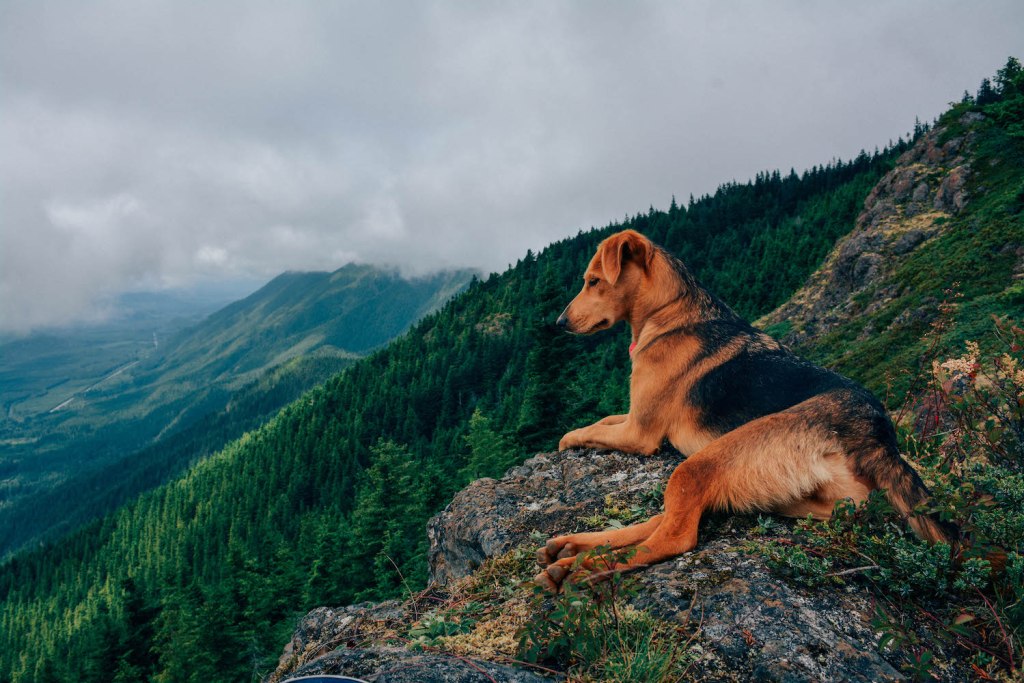Your guide for taking dogs into the wilderness
Last summer, my partner and I went backpacking on trails in national parks where dogs weren’t allowed. The entire trip, we missed them, so we made a pact to bring them on the next long trip. Maybe we wouldn’t be able to see and do everything on our bucket list, but at least our adventure dogs would be along for the ride.
Now we’re back from a three-week road trip where we backpacked with our dogs most of the time, and we learned a lot from our experiences. Taking your dogs with you on any long adventure is going to present challenges. Here’s what we learned.
Start ‘Em Now
The good news? The future is on your side. Whether you’ve got a pup or an older dog, the best thing you can do is to start working with them now. Get your dog used to being outdoors for long periods of time. Start off with some short hikes, car camping, and weekend trips. This way, they’ll get used to hanging out and sleeping close to strangers at campsites. Our dogs began their love for the outdoors right in our backyard, and we took them hiking and camping as puppies. At first, they were apprehensive around new sounds and people. But when it became a regular routine, they were able to relax and find their comfort zone away from home.

Photo courtesy of Kathleen Morton
Choose Trails Accordingly
We learned quickly that dogs aren’t allowed on most U.S. national park backpacking trails. However, they are allowed in the backcountry in Canada’s national parks. For us, that made it a fairly easy decision. We took our dogs to Banff and Jasper National Parks for extended trips. We also chose to do things when we weren’t backpacking that were dog-friendly. We ate at restaurants that had outdoor seating and allowed dogs on the patio. We took turns showering and packing our stuff up at campsites so that one of us was always watching the pups. Deciding what we wanted to do became a lot less difficult when we knew we had to plan around them.
Prefer to stay local? Dogs might not be allowed on national parks’ backpacking trails in the U.S., but they are allowed in most national forests. A lot of national parks have national forest surrounding them, and they’re far less populated. Do some research and pick hikes close to where you would be going if you didn’t have dogs with you. A lot of times these hikes provide similar views. Plus, fewer people means fewer distractions for your dogs and a more remote experience for you.

Photo courtesy of Kathleen Morton
Pack Extra Food and Water
One of the biggest mistakes we’ve made while backpacking was not packing extra food. And I’m not talking about food for ourselves. If you discover an awesome area in a national forest, you can choose to stay longer if you’d like. But having dogs around means factoring in their needs, too. Make sure to pack a little extra kibble (one to two days’ worth per pup). Yes, this means adding extra pounds, but if your dogs are in good shape, you can have them carry some of their own food. Looking to slash more weight? Hunt for trails that cross rivers and streams—and campsites near lakes—so you don’t have to carry as much water for your furry friends.
Quick-Hit Tips
- Your dogs might be great off-leash, but you should still keep one within easy reach just in case. You might run into some dogs on the trail that aren’t as friendly. When that happens, you can quickly leash your dog and pass without getting into any trouble. This will also give you the ability to leash them if you spot wildlife, which will keep both your pup and nature safe.
- If you’re going somewhere with a body of water and you’re worried that your dogs might not be the best swimmers, pack a doggy life vest or two. You can strap them to the outside of your backpack and they will come in handy if you’re forging rivers or camping near a lake.
- There are several dog sitters located near national parks in the U.S. If you’re on a road trip with your dogs and want to go backpacking in a dog-free area, you can hire someone to watch your pup for a few days.
- When crossing borders, do your research before hand. In Canada, you are required to show proof of vaccinations. Have your documents at the ready in case you run into issues at the border.

Photo courtesy of Kathleen Morton
